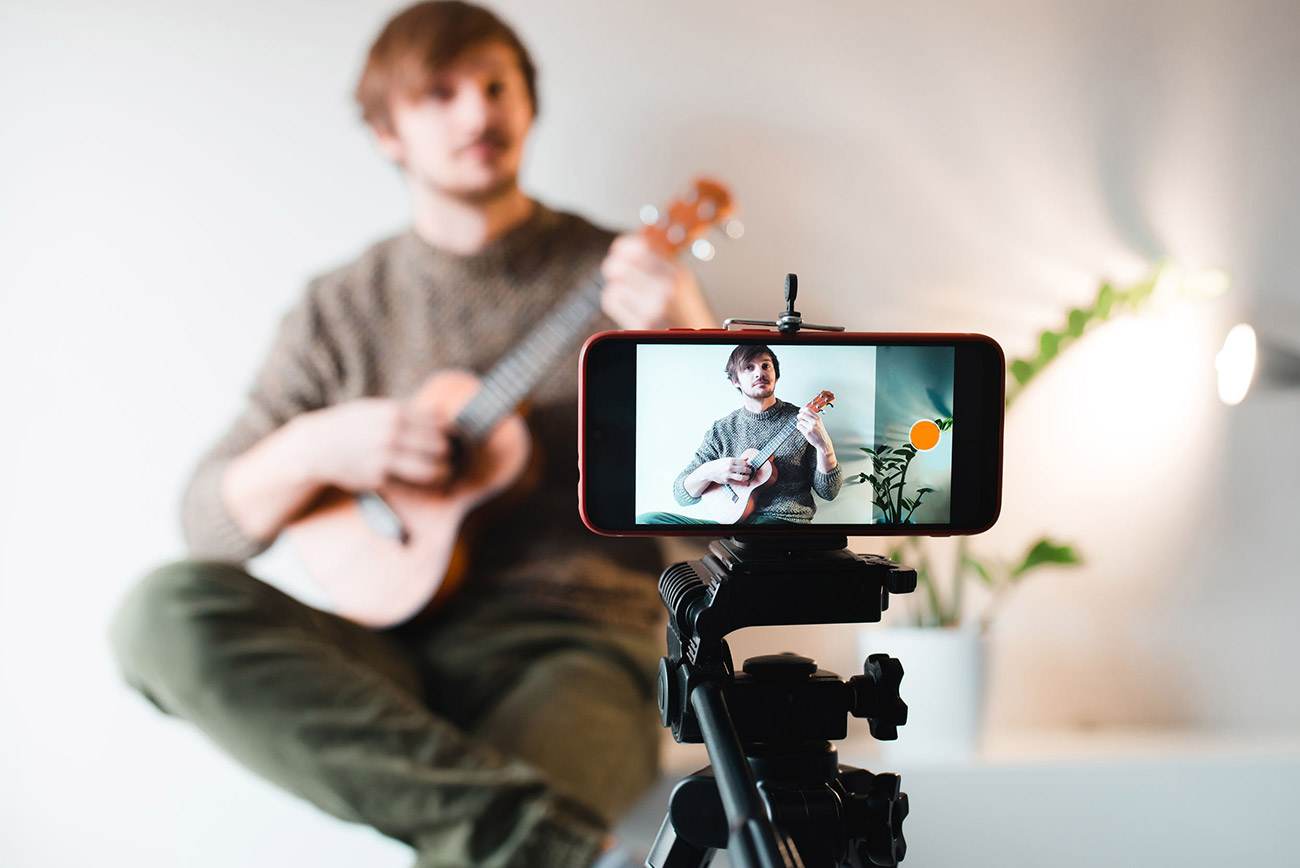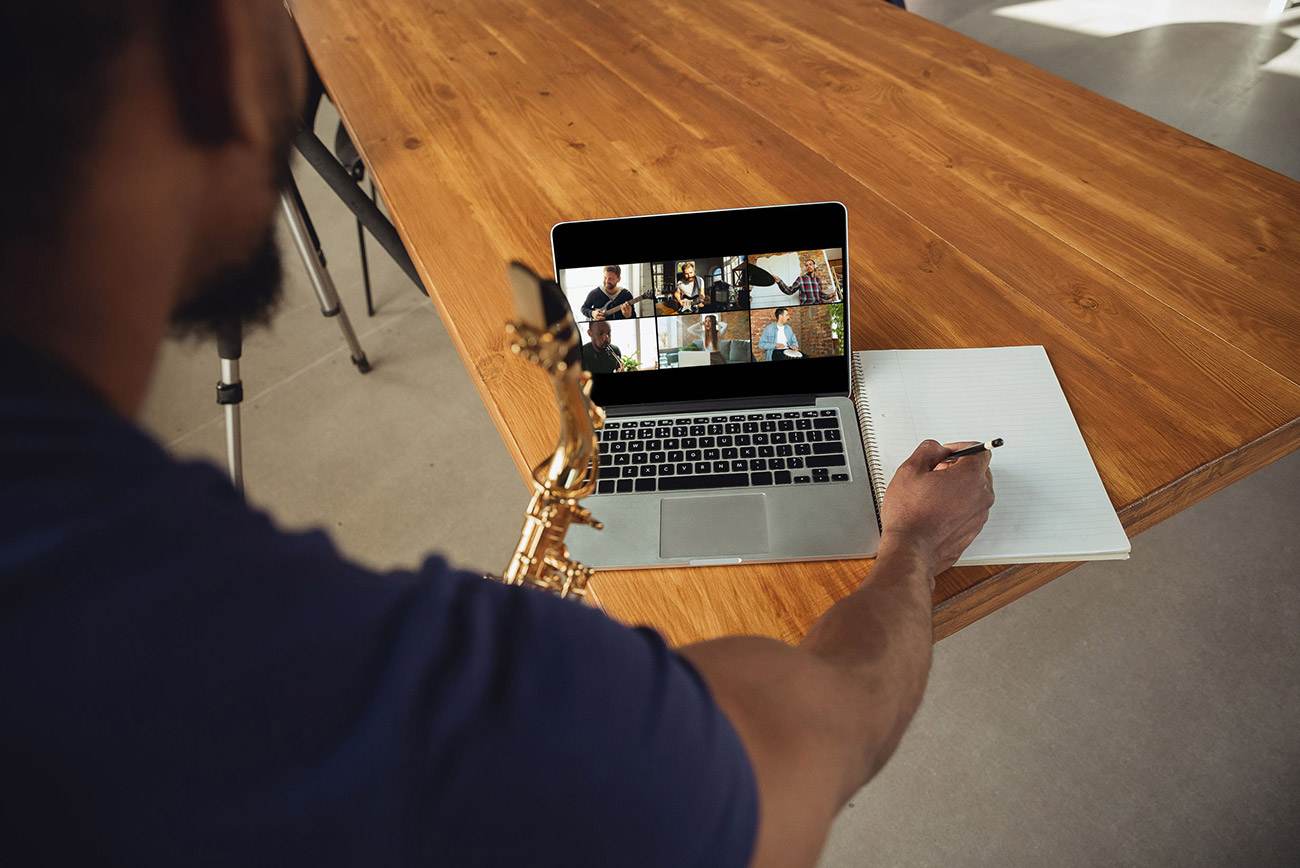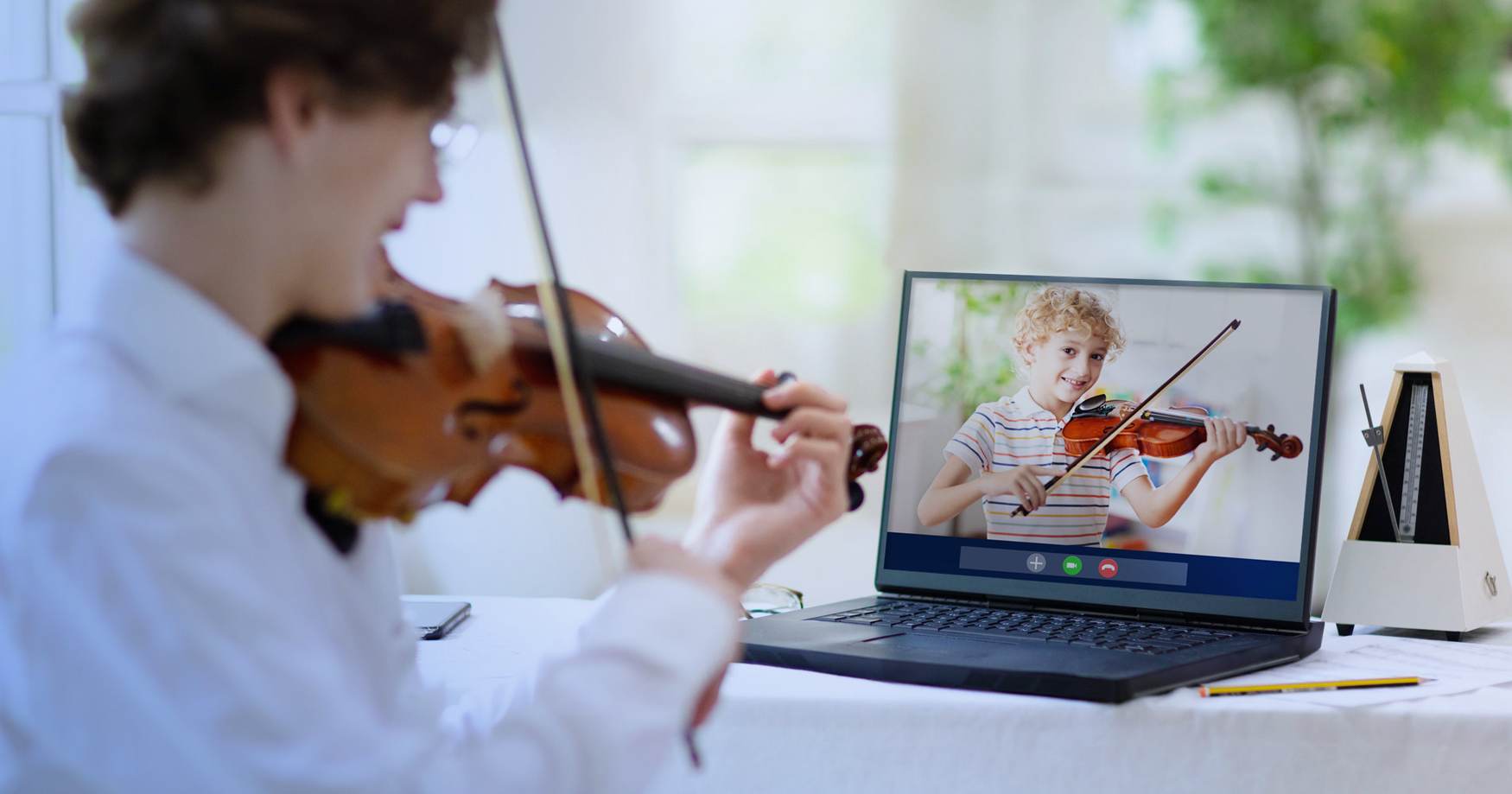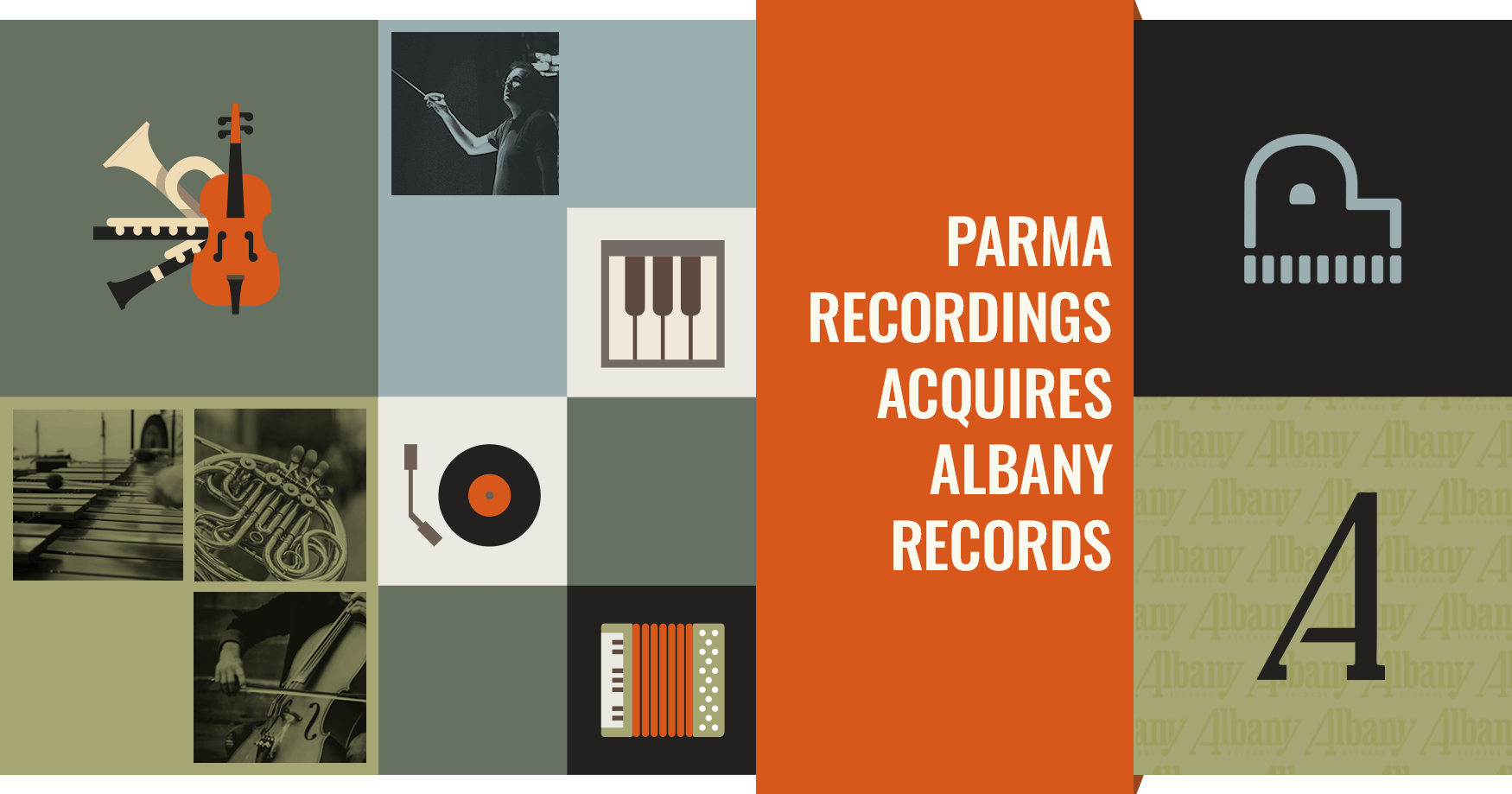By Rina Furano
With most of the world on lockdown, and the economy having taken a hit, many musicians are faced with a blow to their often already-precarious incomes. Thankfully, however, this situation is also a chance: Firstly, self-employment comes with an almost paradoxical job security (you can’t be fired if there’s no one to fire you); secondly, who could possibly be better equipped for the lockdown than a professional who is already used to spending long stretches self-disciplining and working alone? If you’re still unsure of how to make the most of the lockdown, here are our tips to salvage your teaching business – whether it’s a side gig or your main job.
Reach out to your current students
With almost everybody cooped up at home, boredom runs rampant. At the same time, people suddenly find themselves in the proximity of their musical instrument almost 24/7. The result? Students actually practice more, not less. Absolutely take advantage of this, if you haven’t already: Inform every one of your students – make it a personal message, if you can – that you are switching the in-person lessons to online lessons for the duration of the lockdown. Politely ask whether they would be open to trying a remote session. Assure them that you have a professional, working set-up at hand (see Point 2), and mention that there will be no hard feelings if they’d rather continue their lessons in a couple of months’ time (be sure to add this quite casually). Everyone is used to video conferences by now, anyway – so you’ll be surprised how many of your students will welcome your initiative and actually book a remote lesson.
There might be a handful of students who, for some reason or other, are opposed to the idea of remote lessons. Make the prospect more attractive by either offering a free trial session to help them get set up, or by providing a discount for online lessons. Don’t go lower than 20% off at most – it’s still your time and expertise you’re selling, after all, and whatever you earn will still have to be taxed. Make sure it is worth your effort; if it isn’t, just politely let it go and focus on your more committed students instead (or, indeed, on finding new ones – see Point 5).
Set up your teaching space

So you’ve got some bookings lined up. Excellent! There are three things that matter in your tech setup: Camera positioning, lighting and audio. Take at least an hour well ahead (!) of time of your first lesson to get set up. Trust me, getting it right will take a while.
The handiest camera to use would be the front-facing camera on your phone, or better yet, your tablet (the bigger screen allows you to see your students more clearly). Avoid using a webcam if you can – the picture quality is often poor, and computers are much more prone to issues with in-call audio than phones/tablets. Whatever camera you choose, it should be positioned in a manner that allows the other party to see you holding/playing your instrument with good posture. You should be taking up most of the screen. (As an added courtesy, you might want to tidy up the background, too.) This is fairly easy to accomplish with a tripod; if you haven’t got one, fashion a makeshift tripod out of whatever you can find.
Next is lighting. Ideally, you can place your instrument facing a window, so that you get plenty of daylight. If this isn’t an option, or you mostly teach at night, make sure your teaching space is well lit by either a softbox (ideal) or a lamp. You may be able to adjust the brightness a little in your phone’s/tablet’s camera settings, though be warned: this often doesn’t translate into other apps like Skype or Zoom. So make sure everything is visible clearly (perhaps by video-calling a friend in advance to test the waters).
Last but not least is audio. It’s last on this list because there’s usually no problem: it may be hard to believe these days, but phones (and even tablets, to a degree) were actually *made* to pick up audio and send it to another device. Incredible, I know! – Just make sure your tripod, makeshift or real, doesn’t cover the hole(s) of the microphone, lest your students will only hear whooshing and swooshing and you won’t be able to figure out why (let’s just say this once happened to a friend of a friend).
Prepare EVERY. SINGLE. LESSON.

If you’re an inexperienced teacher, you may still be at the stage where you’re more or less winging your lessons, improvising as you go along. This is a risky strategy and generally leads to poor student retention in normal times, but it’s absolutely catastrophic now; so take this as a prompt to develop a better work ethic and start preparing. Take notes during each and every lesson, including what material you covered and what you plan to do next. This is particularly vital now, since you’ll have to send sheet music to every one of your students in advance, so that they can print it out before the lesson. Make sure you have a printed copy of every piece, too, and that you have it at hand – nothing more unprofessional than scrambling for it during the lesson itself, while you are being paid to do actual teaching. If your student is playing from a book you don’t have, ask them to take a picture of the music and send it to you. (You can easily convert it to a black and-white, easily-printed PDF with a scanning app if you’re extra cool.) It’s a bit more effort in the beginning, but the increased workload will soon ease off when everyone is supplied not only with their current sheet music, but with a couple of weeks of material in reserve.
Make sure your students also know which app to use (Skype works well and is free) and how to find you on this app. Choose a distinct, professional, easy-to remember user name – you don’t want your students having to wade through 60+ pages of John Smith’s in order to find you.
Teach
There is not much to say here, because apart from possibly having to help a few students set up their cameras, and dealing with poor Wi-Fi once in a blue moon, this will all go surprisingly smoothly if you’re well-prepared and know what you’re doing. Depending on your and your student’s technological setup, you might have to forgo working on the finest details of intonation and dynamics for now; focus on teaching broad-strokes technique, sight-reading, acquisition of new pieces, and (possibly, if you have an easily-explained concept) improvisation instead, and you’ll be fine.
(Optional) Use the time to grow your business and acquire new students.
It would be easy to write another full-length article on this subject, so I’ll just give you some rough ideas. Use sites like Craigslist (or your local version thereof) to advertise your teaching business. Split-test different versions; make sure all of them include a nice, clear picture of your professional remote teaching setup to inspire confidence. Make clear whether you intend to continue the lessons after the end of the lockdown, or whether you prefer to transition to in-person lessons eventually. Set yourself apart from your colleagues by briefly outlining what makes your lessons special (and don’t write that you offer “individualized lessons” – that should be a given and really the least your paying students can expect). If you’re so inclined, choose a niche: e.g. only teach children within a certain age range, or working adults, or students needing preparation for music exams. Specializing in the needs of one target demographic is generally a recipe for success, improves your particular skill set, and can be extremely profitable; there’s a reason why businesses and corporations do it.
Last but not least, don’t forget you are a musician first of all. You’ve already braved countless hours of hard work, uncomfortable challenges and performance under pressure; compared to that, the current situation is innocuous. With the right attitude and your concentrated effort, you might well come out of this improved and more successful; your teaching business certainly will.
– About the Author: Rina Furano (b. 1989) is a Viennese classical composer, pianist and author of 450+ musical works to date. The catalogue so far includes two symphonies, a dectet, quartets, trios, duos, sonatas, choirs, 180 lieder and dozens of works for piano solo and duet. Latest achievements include a new piano pedalling technique and an expansion of the traditional sonata form (see Innovations).
Actively eschewing the limelight in favour of a monkish dedication to musical craftsmanship, Furano composes full time. In addition, she teaches 19th-century piano technique and the trade of classical composition to a strict selection of talented students. 2020 marks an unusual break from her reclusion as the composer stands to publish a new pedalling technique, and to release a new original opera (Nebelfeld or The Merry End of the World).



